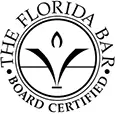Medical Errors
With a large population at risk of medical errors, you need a medical malpractice lawyer to explain medical errors and your rights if you medical negligence injured you. Until you have a chance to call a medical malpractice lawyer near you to discuss your situation, this blog can explain some of the general concepts involving errors and malpractice.
What Is a Medical Error?
Medical error is the third-leading cause of death in the United States. Patients dying due to medical mistakes account for nearly 10 percent of American deaths yearly.
These medical errors include actions or inactions taken by medical personnel that injure a patient. The error may take place during diagnosis or treatment. Most medical errors are preventable and happen because of negligence on the part of medical staff. If a patient experiences the harmful effects of medical errors, they may have a legal right to compensation.
Common Causes for Medical Errors
A negligent act is at the heart of any medical error made by a hospital, doctor, or other medical staff. Medical personnel can be negligent in various ways. In the case of medical error, medical staff is most likely negligent in the following ways:
Misdiagnosis
Misdiagnosis refers to the incorrect diagnosis of a particular illness or condition. It is dangerous to receive the wrong diagnosis. Without a proper diagnosis, an individual will receive inappropriate care and risk exposure to harmful medical treatment. In the case of a false cancer diagnosis, chemotherapy will harm your well-being.
Delayed Diagnosis
Delayed diagnosis is as dangerous as being diagnosed with the wrong condition. A delay in diagnosis is a delay in treatment. A delay can lead to illness progression or even death. Prompt diagnosis of a medical condition can also have a significant financial impact. You may incur additional medical bills as you try to get a second opinion from another doctor.
Inadequate Communication
Medical staff should have proper communication. Good communication between doctors, nurses, and other staff protects patients. Inadequate communication leads to medical errors. If the medical staff responsible for your care does not effectively communicate, you may receive incorrect prescriptions, the wrong test results, etc.
Surgical Errors
Surgery is risky enough, but it can become a life-threatening event if your surgical team makes a serious mistake.
Surgical errors can include:
- Operating on the wrong site.
- Incorrectly administering anesthesia.
- Erroneously removing an organ or limb.
- Even operating on the wrong patient.
Surgical errors can lead to permanent disability, disfigurement, and death.
Technical Failures
Outdated equipment, undertrained staff, and unsanitary conditions can all lead to medical errors. These technical failures can place patients in danger of infection, illness progression, medication error, etc. Medical providers may face legal liability for a technical failure if the patient suffers an injury and can demonstrate the provider was negligent.
Inadequate Institutional Policies
Medical error can happen when an institution has not put adequate policies in place to protect its patients. Hospitals and other medical institutions should have documentation policies that allow them to properly care for, monitor, and treat their patients.
Patient-Related Issues
Doctors and nurses must make an accurate patient history. Medical staff should ask the patient about allergies, past surgical procedures, current health conditions, etc. Failure to get an accurate patient history can lead to medical error. For example, if medical personnel do not note that the patient is allergic to penicillin, the patient may receive this medication and suffer a harmful allergic reaction.
Medication Error
Medication errors are far too common across the United States. Medical staff must ensure that their patients receive the correct medication, in the proper amount, and in some cases, monitor the patient’s reaction to the medication. Failure to do this is a medication error. Medication errors can cause severe injury or a patient’s death. Medication errors can happen during education, packaging, monitoring, dispensing, product labeling, prescribing, distribution, etc.
Common types of medication errors caused by medical personnel include:
Prescribing the Incorrect Medication
Doctors must prescribe the correct medication to the right patient. If a doctor does not prescribe the proper medication, the patient is at risk for illness progression. Your doctor should understand your illness and prescribe the proper medication. Receiving the wrong medication not only leaves you without the proper treatment but can put you at risk of adverse drug reactions to the medication you received.
Incorrect Administration
Pharmacists should administer medication per the doctor’s direction. Inaccurate administration of drugs may be the basis of a medical malpractice lawsuit.
Incorrect Dosage
You may have received the correct medication, but you can still face detrimental effects if you do not get the correct dosage. If a patient is under-prescribed, their treatment will likely be ineffective. Ineffective treatment can severely harm a patient.
Failure to Monitor and Lack of Follow-up Care
Doctors and other medical staff should monitor patients while in their care, especially if the patient is in the hospital or an inpatient facility. Medical staff should take the time to ensure they give patients the correct medicines and that the medications do not cause an adverse effect on the patient. Staff should monitor drug interactions. Bad drug interactions can lead to severe injury or death.
Documentation Errors
Doctors and nurses should use the patient’s history to ensure they are giving the patient the correct amount of medicine. Failure to use the patient’s history effectively may be medical malpractice. If you or your family have suffered an injury due to a documentation error that led to a medication mistake, you may have a civil claim against your provider.
Physical Consequences of Medical Errors
Patients can suffer physical consequences if the medical staff’s negligence causes a medical error.
Some of the most common physical effects of medical mistakes include:
- Health complications
- Progression of a condition
- Disability
- Disfigurement
- Chronic pain
- Infection
- Death
Legal Consequences of Medical Errors
Patients trust medical personnel to give proper treatment and that when they visit the doctor’s office, they will leave better off than when they came. If that does not happen, the patient may be entitled to recover compensation. If you or your loved one has suffered an injury due to a medical error, you need an attorney working on your side to ensure you receive the compensation you are due and that you need to get your life back on track.
To win a claim for negligence related to a medical error, a patient must prove four elements: duty, breach, cause, and damages. We explain each element in further detail below.
Duty
Every medical professional owes a duty of care to each of their patients. Medical professionals are required to act in a reasonable manner. Reasonable means in a similar manner to other medical professionals should act in the same or similar circumstances.
Breach
Failure to comply with the duty of care is a breach. If a medical practitioner breaches their duty of care, a patient may have a legal claim. Reach out to an experienced attorney if you believe you have suffered the negative effects of a medical error.
Causation
You must prove that the mistake the medical personnel made caused your injury. This may be the most challenging part of proving a negligence lawsuit. Most unrepresented injury victims have issues proving fault. A medical error attorney can use their resources (i.e., expert witnesses) to help you prove your injuries resulted from negligent medical personnel.
Damages
You must prove damages to win an injury lawsuit. If a medical error happens, but it does not cause you compensable harm, you will be unable to recover money. Damage comes in different forms. If you are unsure whether you suffered damages, you should discuss the facts of your case with a medical error attorney.
Types of Damages Available in Medical Error Cases
Negligence cases generally have three damage categories: economic, non-economic, and punitive. An injured party may suffer damages that fall into one or more types of these damages.
Economic
Economic damage refers to tangible losses from an accident. Economic damages are easily calculable and readily determinable. Economic damage can include current and future medical bills, lost wages, lost earning capacity, and the cost of paying for domestic help, including childcare, cleaning, pet care, etc.
Economic damages may increase throughout the case. For example, your injuries may require long-term treatment that increases your bill as the case progresses.
Non-economic
Non-economic damages cover intangible losses from a medical error. Intangible losses are those that are not easily calculable and unseen. Non-economic damages are compensable in medical error cases, but they may be difficult to prove. Examples of non-economic damage can include pain and suffering, loss of enjoyment of life, inconvenience, loss of consortium, loss of companionship, emotional distress, etc.
Punitive
Punitive damages are rarely awarded but may be available depending on your state. Punitive damages apply in cases where the defendant acted wildly outrageously. Courts usually limit the dollar amount awarded for punitive damages. Your attorney can help you know whether punitive damages are available in your state and the amount available for recovery.
How Can a Medical Error Attorney Help Me?
Patients who suffered an injury due to medical error may have an easier time getting the compensation they need to recover financially after getting hurt due to medical negligence. A medical error attorney can help you in the following ways.
Find Responsible Parties
In a medical error case, there are multiple potentially responsible parties. Potential defendants in a medical error case include doctors, nurses, medical staff, hospitals, chiropractors, psychologists, emergency room departments, etc. You may find yourself in a battle with multiple insurance companies and other parties.
An attorney can help ensure you find and name each potentially responsible party in a lawsuit. You need a lawyer who can name everyone responsible because each responsible party might need to pay you damages. The more people you can hold accountable, the more likely you can receive full compensation for your damages.
Collect Evidence
Your attorney may conduct an investigation and collect evidence to support your claim. Insurance companies and defense attorneys will work hard to disprove your claim and deny your injuries to have a basis to avoid paying out. An experienced medical error attorney will work to help you avoid the typical tactics insurance companies use to avoid paying settlements.
Common tactics of insurance companies include:
- Fast lowball settlement offers.
- Asking for a recorded statement before you have a chance to consult an attorney.
- Reviewing your medical records.
- Using information learned to downplay your injuries.
Identify Your Losses
Some losses are apparent, but others are not. However, you deserve compensation for each of your losses. You may not know that harm you suffered from a medical error is compensable, but your attorney will work with you to identify economic and non-economic damages and the availability of punitive damages.
Explain Your Legal Rights, Determine if You Have a Valid Claim, and Help Manage Your Expectations
Your attorney can help you manage your settlement expectations during a medical error lawsuit. Often injured parties do not know what to expect when they are involved in a lawsuit. Your attorney can take the reins and offer guidance about what to expect during settlement negotiations, the pretrial phase, and the trial. Use your attorney as a resource to answer questions and understand the procedures you will find yourself knee-deep in once a civil lawsuit begins.
Fight for the Best Results for Your Claim
Medical error attorneys are zealous advocates for their clients and work hard to get the best results for them. With an attorney, you can rest assured that your interests are taken care of, and you will get the best results for your claim.
Contact a Medical Malpractice Attorney In Your Area Today

Contact a medical malpractice lawyer to protect your legal rights after an accident. A medical error can significantly impact your life and the lives of the ones you love. Whether you were misdiagnosed, received the incorrect medication dosage, or suffered a surgical error, you can pursue compensation more efficiently with an experienced attorney working on your behalf.
If you or a loved one suffered an injury caused by medical negligence, contact a medical error attorney in your area immediately.
Request A Free Consultation Today!
Boohoff Law, P.A. — Auto Accident Lawyers – Tampa Office
829 W Dr Martin Luther King Jr Blvd,
Tampa, FL 33603
Phone: (813) 725-5606
Free Consultation
We Are Here For You 24/7
Reviews
– Elissa M.
“Really pleased with Boohoff Law! Received immediate responses when I had any questions. Treated amazingly by all staff … made this process a true breeze!”
– Caitlyn M.
– Brandy K.
Related Posts
Lowball Offer for Your Totaled Car? What To Do When Your Car Was Totaled and the Insurance Offer Seems Too Low
Wrecked Without a Buckle: Can I File a Claim if I Wasn’t Wearing a Seatbelt in a Car Accident?
Sidelined by a Sudden Door? Figuring Out Who Is Liable in a Dooring Bicycle Accident
Recovery is personal.
We’re here for you.
We’re close by. And if you can’t make it to us, we’ll meet you where you need us, at home or in the hospital.
You're better off with Boohoff.











The information on this website is for general information purposes only. Nothing on this site should be taken as legal advice for any individual case or situation. This information is not intended to create, and receipt or viewing does not constitute, an attorney-client relationship.
available 24/7
(877) 999-9999
